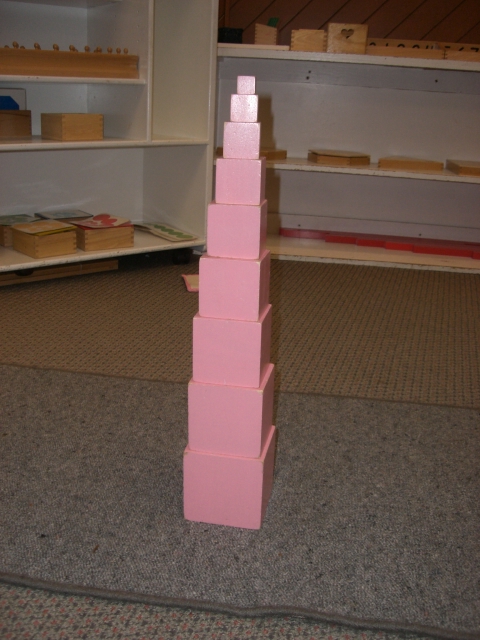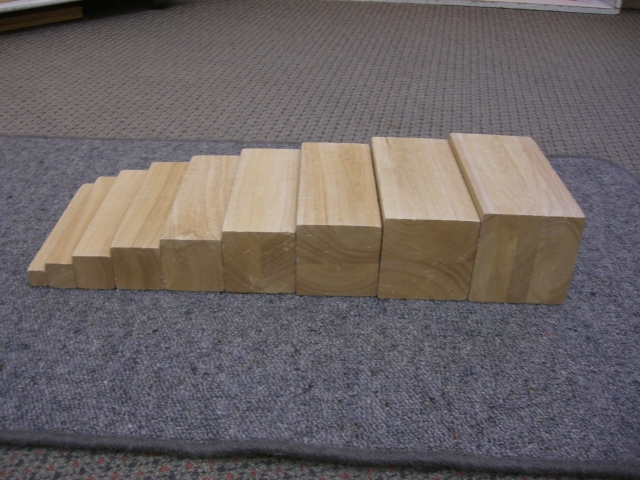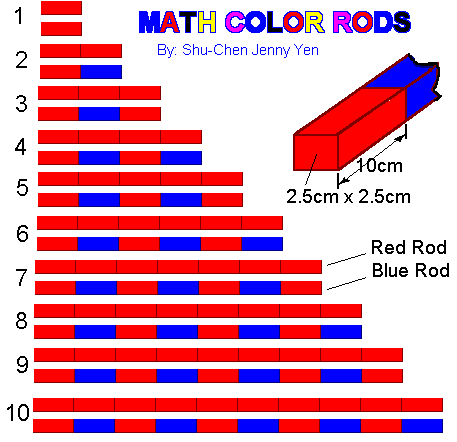Montessori Activities: Maths
PRELIMINARY ACTIVITIES
Awareness of cardinal numbers one, two, three...etc
- Counting parts of the body while dressing
- Counting objects
- Rhymes and songs
- Birthdays
Awareness of ordinal numbers
- You go first, second, third , last
- Birthday, your first birthday, second birthday, third etc
Awareness of numerals
- Many birthday cards have numerals on them
- Street numbers
- posters displaying numbers 1 -10
One to one correspondence
- Two people - two plates
- three children - three apples
- ten friends at a birthday party - ten paper hats
Sequencing All counting is sequencing in some way. Note rote counting is the ability to say numbers in sequence with no related objects. Many number rhymes include rote counting. Tally counting is the ability to count objectsin sequence eg lets count the cats in this picture, the apples in this dish etc.
Concepts of Size
- The Long Stair, The Broad Stair and the Pink Tower
These three materials are made with mathematical precision and can be used as the basis for higher mathematics and you will find that the child will return to these materials through their development for different purposes. These materials represent differences in length, area and volume, and the numbers which they represent fall into the range of the units (up to 10), the tens (up to a hundred) and hundreds (up to a thousand), also the amount of water which would fill the volume of the smallest cube of the Pink Tower is exactly one millilitre and the largest cube one litre. Indirect Preparation for numeracy which is an awareness of cardinal numbers, ordinal numbers, numerals, one to one correspondence, sequencing and tally counting. Also concepts of size, length, area and volume. These activities are suitable for beginning mathematicians as well as infants, toddlers and 3 - 6 year olds.
The Pink Tower:
- This is part of the sensorial education but is also a preliminary maths activity. It develops visual discrimination of size and volume.
The Broad Stair:
- Also part of sensorial education, the Broad Stair develops visual discrimination of thickness and differences of two dimensions - area
The Long Red Rods:
- Also part of sensorial education, the red rods develop visual and muscular discrimination of length.
Presentation: Matching the Red Rods with the Red and Blue Rods
Materials:
- Set of red rods
- Set of red and blue rods
Prerequisites:
Mastery of gradation of red rods.
Control of error:
Visual and tactile: lengths of pairs of rods must mach.
Aim:
Transition from sensory area into Math.
Point of interest:
Making the match.
- Invite the child to look at the environment and say " Do you see any materials that look like the red rods?"
- Define what we are going to do, such as "we are going to match the rods."
- Teacher chooses a red rod and separates it from the group and lets the child feel how long the rod is.
- Let the child go to the Red and Blue Rods and find one rod as long as the one the teacher just showed.
- The child carries the rod back and checks by himself.
- Let the child move the matching pair to another empty rug.
- Continue doing the same activity until all rods are matching.
Options:
- Put set away.
- Grade Red and Blue Rods.
- Grade pairs.
Links
References
- Binda Goldsbrough (1995) The Aperfield Montessori Course




